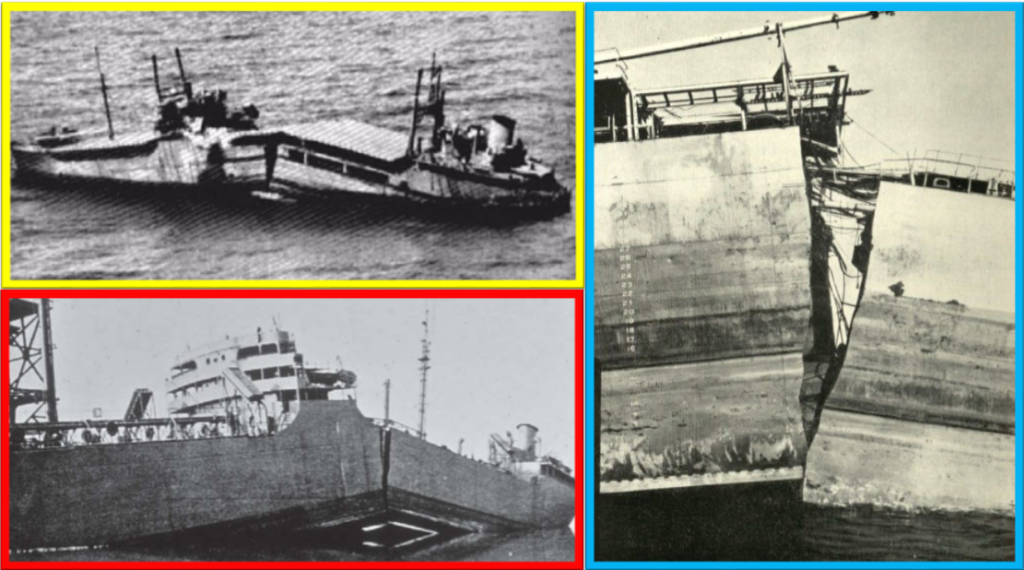Grades 9-2
What caused WWII Liberty Ships to Crack and Split?
Mystery
During World War II (1941-45), the United States provided ammunition and supplies to allies, Britain and France, to help them resist the onslaught by German forces. These supplies included over 2700 ships known as “Liberty ships” which were built in the US and sent to the North Atlantic.
Our British and French allies were thrilled to receive these ships but became quite concerned when the first few started cracking and later splitting. Soon after the first ship split many additional cases of failure were reported and at least one case involved loss of life. The loss of life prompted an urgent need to quickly figure out why this was happening so future loss could be prevented.
Due to the aggressive timelines of the war, the ships, which featured a simple British design and were primarily constructed from welded sheets of steel, were manufactured rapidly in over a dozen shipyards that were often short on skilled workers. The Liberty ships were crucial in resupplying the allies with weapons and played a critical role in shortening the length of the Second World War. Many of the Liberty ships sank due to German torpedo attacks. However, several others survived the attacks only to later experience structural damage from cracks that developed in their decks and hulls. Before the war ended, there were 1500 crack failures (cracks growing due to stress) reported in these ships, and several ships split in half.

The cause of the sudden failures in these ships was a mystery at the time. Several factors were considered, including the lack of skills among the ship-building personnel and the poor quality of the welds. Today, mysteries like this one would be solved by teams of material science and mechanical engineers.
Career Education and Description
Education or skills required: The minimum education required to become either a material science engineer or a mechanical engineer is the completion of a bachelor’s degree with a major in either material science engineering or mechanical engineering. While some careers require a master’s or Ph. D. in these areas, an engineer with a bachelor’s degree would be more than capable of solving mysteries such as this one.
Materials science engineering is the study of uses for materials in other fields and industries.
Materials science engineers explore the scientific fundamentals, design, and processing of materials for real-world applications. They apply the basic principles of chemistry and physics to understand the structure and properties of materials and design processes to manipulate materials to meet the needs of modern technology. For example, they may explore ways to develop advanced materials to make structures such as aircraft and automobiles stronger, cheaper, and more fuel-efficient or they may study the properties and structures of metals, ceramics, plastics, composites, nanomaterials (extremely small substances), and other substances to create new materials that meet certain mechanical, electrical, and chemical requirements.
What is mechanical engineering and what do mechanical engineers do?
Mechanical engineering is the study of physical machines that may involve force and movement. It is an engineering branch that combines engineering physics and mathematics principles with materials science, to design, analyze, manufacture, and maintain mechanical systems.
Mechanical engineers design power-producing machines, such as electric generators, internal combustion engines, steam and gas turbines, and power-using machines, such as refrigeration and air-conditioning systems. They also design machines for use inside buildings, such as elevators and escalators.
Solving the Mystery
Which of the following items would a material science engineer or mechanical engineer most likely check to solve the mystery? You can use the worksheet below (print or open on your device) to help solve the mystery:
Possible causes of Liberty Ship failures:
Attacks on Ships
Could the Liberty ship failures have been caused by attacks such as torpedoes or aerial strikes? We know that throughout the war, attacks did cause damage to many types of ships. Using the chart below, determine whether the Liberty ship failures were likely caused by damage from attacks. Could the damage have been severe enough to split the ships in half?
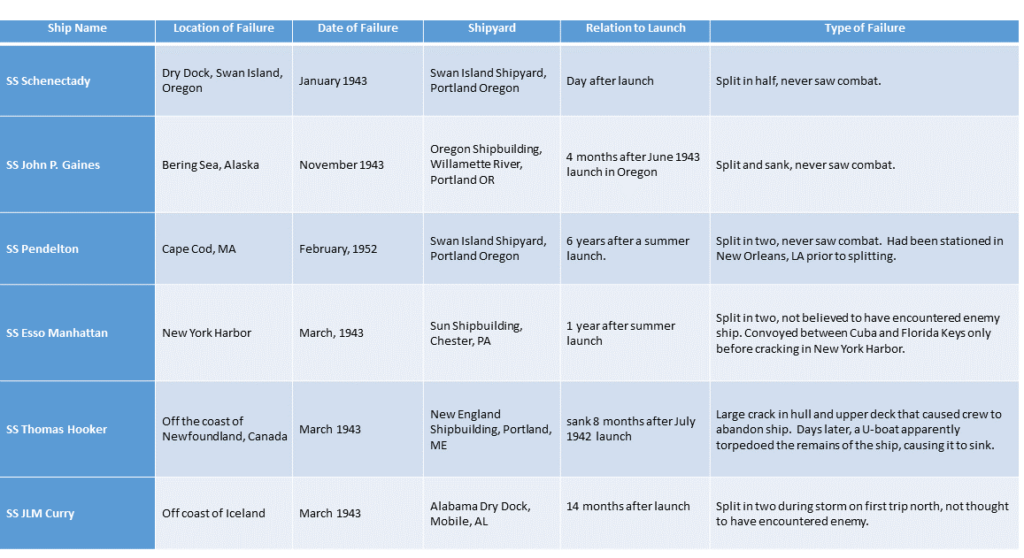
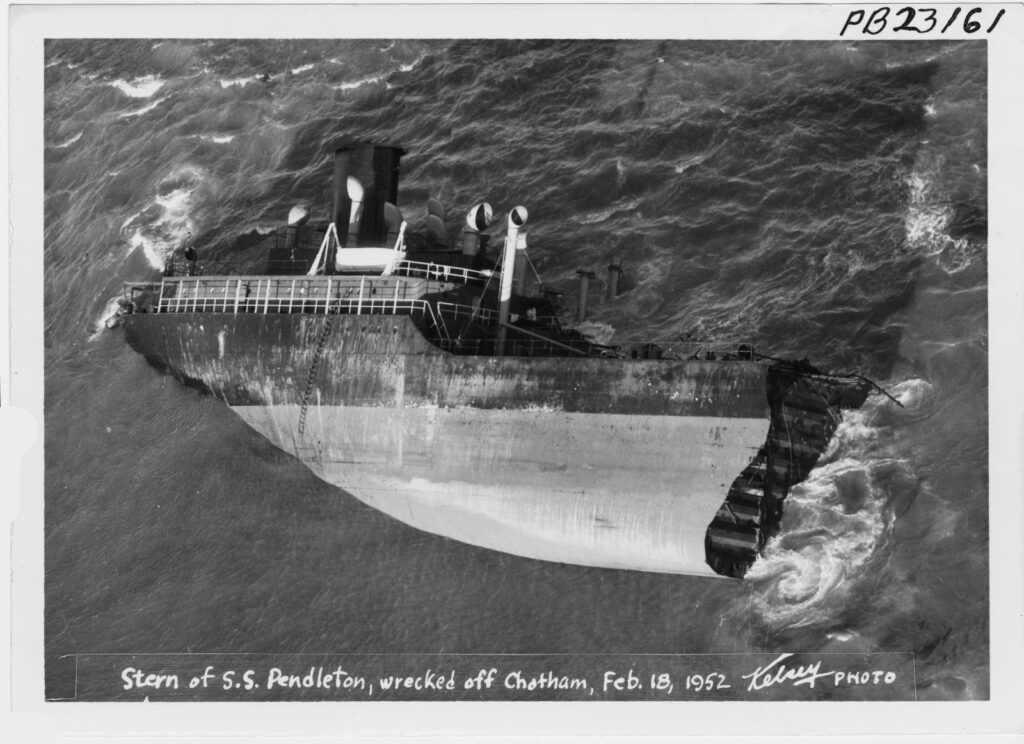
Quality of Metal
Can the Liberty ship failures be attributed to the quality of the carbon steel metal used? We know the thousands upon thousands of metal sheets used to build the Liberty Ships were spot tested for quality during the manufacturing process. Do you think inferior metal could have resulted in the cracking and splitting of ships?
Direct Fracture due to forces at sea, such as waves and propulsion
Can the Liberty ship failures be attributed to the quality of the carbon steel metal used? We know the thousands upon thousands of metal sheets used to build the Liberty Ships were spot tested for quality during the manufacturing process. Do you think inferior metal could have resulted in the cracking and splitting of ships?
Fatigue of the Steel (cracking of the steel)
Could cyclic loading (repeated stresses over time) have caused damage to the Liberty ships despite some of the ships cracking even before they were loaded? Fatigue can be explained by the example of a paper clip being bent back and forth over and over. After about twenty to thirty times being bent, the wire will break. This failure occurs when a microcrack develops and then spreads due to fatigue, or cyclic loading. Typically, the microstructures of fatigued metals show micro-cracks that spread and grow. Over hundreds of thousands of times this cyclical loading can result in failures of the structure of the metal or whatever substance the ship is built from. Check out the images below to see the damage to metal caused by cyclic loading. Do they look similar to the cracks seen in the Liberty Ships that split? And consider what type of cyclic loading would have been needed, or what stresses would have to have occurred to impact the ships that split in two, given where the splitting occurred.


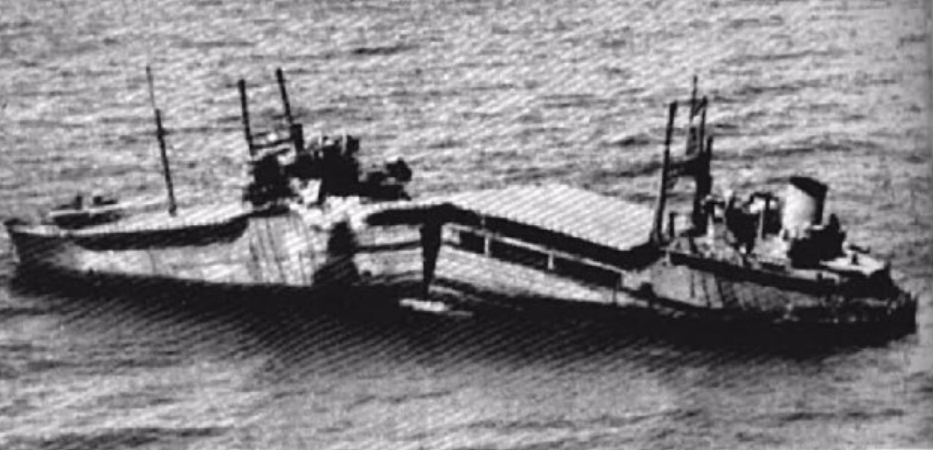
Steel Ductility
Could ductile-to-brittle transition, where some metals become brittle when the temperature decreases, be responsible for the damage to the Liberty ships? Ductility, directly related to the toughness of materials, allows for a “stretch” in the material before failure, which creates some resistance to sudden fractures. Ductility drops suddenly at lower temperatures for many materials, including certain types of steel. This phenomenon occurs upon cooling and is referred to as a ductile-to-brittle transition.
One scientist decided to test the carbon steel metal used in the Liberty Ships at different temperatures. Her experiments showed results similar to the table below. The lower the numbers in the ‘impact energy (kJ) section, the more brittle the metal is and the more susceptible it is to sudden failure upon loading. Do you see any problems with the metal in the chart below?
Plastic Deformation is a permanent deformation or change in the shape of a solid body without fracture under the action of a sustained force.
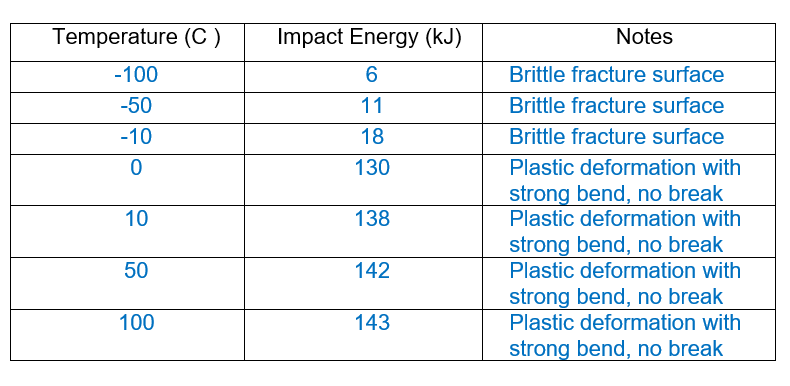
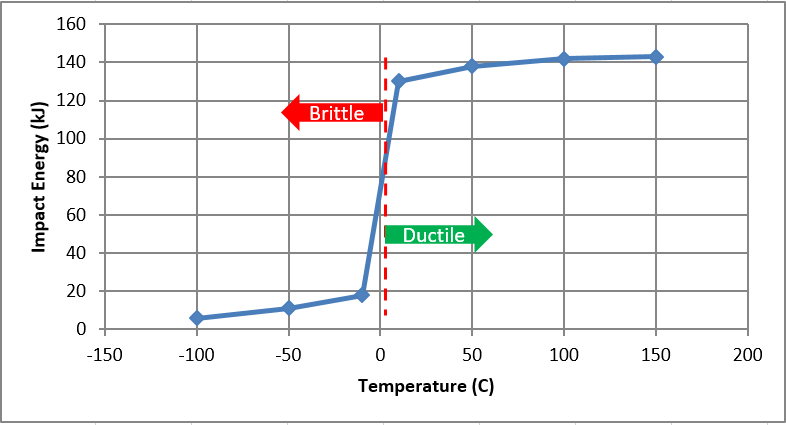
Corrosion from chlorine or hydrogen in the water
Could stress corrosion from hydrogen, high levels of chlorine in the water, or salt be responsible for the splitting of the Liberty ships? Look at the ship below to determine if you think that corrosion is the cause of the splitting.
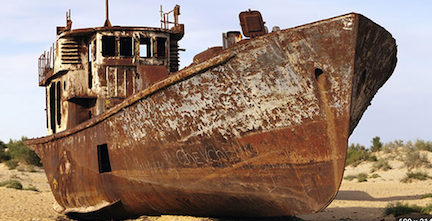
Temperature Gradients
Could temperature gradients have caused the damage experienced by some Liberty ships? We know that severe thermal gradients can cause material failure. This can happen when one side is exposed to heat or cold while the other side is not. You can see and hear this type of cracking when ice cubes are placed in a glass of room temperature water. The outside of the cubes crack because they are warming much faster than the inside of the cubes.
Steel is a good conductor of heat, so a sudden cooling of sufficient degrees to cause a crack is very difficult to achieve. Steel can fail due to thermal gradients at high temperatures of over 500C due to altered material properties at those temperatures. Low thermal conductors such as glass can usually fail from thermal stress at room temperatures; for example, car windows that crack in the sun.
The chart below shows the temperature difference needed to stress the metal of the ships enough to cause a crack. The Stress (MPa) must exceed 300 in order to have any chance of cracking (indicated in red).

As the table shows, the temperature gradient has to be over 200C for the steel in the ships to crack.
After exploring the information above and recording data you think is important on your worksheet, please consider what the next steps should be to solve the problem. Knowing what the problem is constitutes the first step. What second and third steps do you think the material science or mechanical engineer should take to ensure future ships don’t experience structural damage of this nature or crack failures?
Credits:
- Idea: Preetham Rao
- Writing: Donna Abosh and Gail Wheatley
- Editing: Preetham Rao, Donna Abosh and Gail Wheatley
- Illustrations, Charts, Photos: Various

